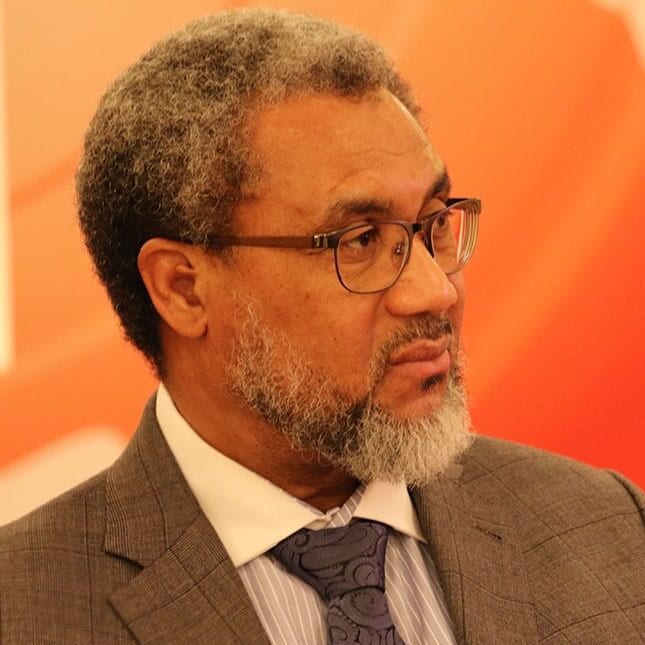There are certain events in the life of nations that define their history for generations. In South Africa, the 1960 Sharpeville Massacre and the 1976 Soweto Uprising are prime examples. In Palestine, Israel’s wilful killing of four Palestinian workers in December 1987 ignited the First Intifada (Uprising) and changed the course of the Palestinian struggle forever.
The comparisons are apt. Sharpeville give birth to Umkhonto we Sizwe (Spear of the Nation), the military wing of the African National Congress (ANC), in 1961, which kept up the pressure on the apartheid regime until June 1976 when the Soweto Uprising erupted and sent several other townships into a spiral of rebellion.
As in South Africa, there were deep seated social, economic and political factors inherent in the Palestinian experience which made the Intifada inevitable. It was from this charged political climate that the Islamic Resistance Movement (Hamas) emerged to become a major political force on the Palestinian scene. Almost thirty years later, Hamas has gone on to develop a military capability that allows it to resist the Israeli occupation as well as pursue the goal of national liberation.
Ultimately, this is as far as the comparisons can go. There are significant differences too. For a start, the ANC never gave up the option of armed struggle before the goal of national liberation was achieved. In Palestine, however, the negotiations which started in Madrid in 1991 were used as a pretext to quash the Intifada then at its height; armed resistance was abandoned by the Western-backed Palestinian leadership. That is still the case today, despite their failure to deliver on any of the promises enshrined in the Oslo Accords and national liberation is still a dream.
Former Hamas spokesman Ibrahim Ghusheh recalls in his newly-published memoirs how intense pressure was brought to bear on Hamas at a meeting convened by Sudan’s President Omar Al-Bashir between Hamas and Fatah just prior to the Madrid Conference. The aim of the meeting, wrote Ghusheh, was to force Hamas to join the Palestine National Council (PNC) and then attend its planned meeting in Algiers, where the PLO leadership intended to endorse the decision to go to Madrid. In the event of any agreement with the PLO, having Hamas within the PNC would have made the Oslo Accords look as if they were endorsed by the Islamic movement.
In its early stages, the Intifada was referred to as the “Mosques’ Intifada” because of the noticeable influence of the Islamic movement in the occupied Palestinian territories. It was later referred to as the “Stones Intifada” in recognition of the weapons used to confront Israel’s military might.
Everyone was taken by surprise by the uprising’s scale and intensity. The occupying Israeli power believed wrongly that after the humiliating defeat of 1967 their colonial project in Palestine would never again be challenged by either the Palestinians or the Arab states. They reckoned that the defeat of the official Arab armies in the Six-Day War had put an end to all forms of resistance.
They were wrong. Out of the rubble of 1967 a new generation emerged; they were not the defeated generation, psychologically or politically, as was often presumed. The regimes around them were, but they were not. They have come of age today.
As for Hamas, it has survived, despite the extra-judicial killings of its historic leadership; despite the siege of Gaza; and despite the attempts by the Israeli occupation to besmirch and isolate the movement with the ‘terrorist’ label. Since the Intifada catapulted it on to the political scene Hamas has remained an indispensable factor in the complex Palestinian equation.
Today it appears that the pre-Oslo scenario is about to repeat itself as Israeli officials point out openly that that they will not sign a deal with the Palestinians if Hamas is not on board.
The failure of the US-sponsored negotiations have left Palestinians bitterly disillusioned and aggrieved. On the other hand, the achievements of the Hamas-led resistance, notably from Gaza, have made them optimistic that they can realise their dream of being free in their own land; not because of US impartiality but in spite of Washington’s bias as a dishonest broker.
For the people of the Gaza Strip, this 26th anniversary of the First Intifada has a special meaning and significance. Just as Soweto formed the crucible from where the South African Uprising of 1976 erupted, so too Jabaliya refugee camp in Gaza became the launch pad of the 1987 Intifada. It was from there, in Gaza, that Hamas announced its arrival with its first communique on 14 December 1987.
The Soweto Uprising of 1976 laid the foundation for the long but ultimately successful international boycott and sanctions campaign against the South African apartheid regime. Although the Palestinian Intifada pricked the conscience of the world community in 1987, this never developed into a similar international boycott, possibly because the priority for campaigners at the time was to defeat South Africa’s heinous political system. Now that it has been dismantled the world must turn its attention to the last remaining bastion of racial domination, Israel’s occupation of Palestine. Justice and liberation for the Palestinians is long overdue but notice is given to the world that whether they get on board to defeat Israeli apartheid or not, the Palestinians have the courage, patience and determination to continue with their resistance, in their own unique style, on their own long walk to freedom.








